The Student Empowerment through Narrative, Storytelling, Engagement, and Identity Framework for Student and Community Empowerment: A Culturally Affirming Pedagogy
Abstract
1. Background
2. Student Empowerment
3. The SENSEI Framework
4. Component: Narratives
4.1. Framing and Historical Context
4.2. Counternarratives: Disrupting Dominant Narratives
4.3. Counternarratives in School Leadership: Juvenile Court and Community Schools
4.3.1. A Dialogic Model to Co-Construct Counternarratives
4.3.2. Counternarratives: Culture, Family, and Healing
5. Component: Storytelling
5.1. Storytelling and Dominant Narratives
5.2. Storytelling and Counternarratives
Storytelling: Counternarratives as Safeguards against Hegemony
5.3. Component Application Example: “If You Don’t Tell Your Story Who Will?” The Ribbon Cutting Ceremony
5.3.1. Dignitary Recognition and Attendance
5.3.2. Community Partner Recognition and Attendance
5.3.3. Media Involvement
5.3.4. Family Engagement
5.3.5. Student Voices
6. Component: Engagement
6.1. Component Application Example: Class Agreement
- We are in a mutual learning partnership with each other as student and professor, and amongst one another between students.
- I, as the instructor, know the profession well enough, but as humans and the world change, so does social work, and our role in society. Therefore, I may not always have the “right” answers, but I am committed to learning alongside you as students.
- You are experts on your lives (this is a social work perspective as well) and your communities, and those experiences are strengths you can and will utilize in your personal lives and careers.
6.2. Component Application Example: Advocacy Letter
6.3. Component Application Example: Resident Testimony
7. Component: Identity
7.1. Component Application Example: PEER
7.2. Component Application Example: Asian American Pacific Islander Mental Health Forum
7.3. A Component Application Example: The Community Asset Map
8. Conclusions
8.1. Narratives
8.2. Storytelling
8.3. Engagement
8.4. Identity
8.5. Owning Our Stories: The SENSEI Framework in Action
Author Contributions
Funding
Institutional Review Board Statement
Informed Consent Statement
Data Availability Statement
Conflicts of Interest
References
- Auger, Monique D. 2016. Cultural continuity as a determinant of Indigenous Peoples’ health: A metasynthesis of qualitative research in Canada and the United States. The International Indigenous Policy Journal 7: 4. [Google Scholar] [CrossRef]
- Baumann, Dianne F. 2023. Thrivance is My Identity: Moving Beyond Survival. Journal of Ethnic and Cultural Studies 10: 1–12. [Google Scholar] [CrossRef]
- Becker. 2021. Ruby Bridges Day; California State Senate Bill 59. Sacramento: California State Senate.
- Benzel, Ed. 2022. Empowerment. World Neurosurgery 157: xv. [Google Scholar] [CrossRef]
- Boyd, Pete, and Caroline Smith. 2016. The contemporary academic: Orientation towards research work and researcher identity of higher education lecturers in the health professions. Studies in Higher Education 41: 678–95. [Google Scholar] [CrossRef]
- Brown, Ray. 2000. Cultural continuity and ELT teacher training. ELT Journal 54: 227–34. [Google Scholar] [CrossRef]
- Câmpean, Adina, Mușata Bocoș, Alina Roman, Dana Rad, Claudia Crișan, Monica Maier, Liana Tăușan-Crișan, Zorica Triff, Dorin-Gheorghe Triff, Daniel Mara, and et al. 2024. Examining teachers’ perception on the impact of positive feedback on school students. Education Sciences 14: 257. [Google Scholar] [CrossRef]
- Chandler, Michael J., Christopher E. Lalonde, Bryan W. Sokol, and Darcy Hallett. 2003a. Personal Persistence, Identity Development, and Suicide: A Study of Native and Non-Native North American Adolescents. Monographs of the Society for Research in Child Development 68: 1–130+139+vii. [Google Scholar]
- Chandler, Michael J., Christopher E. Lalonde, Bryan W. Sokol, and Darcy Hallett. 2003b. Personal Persistence, Identity Development, and Suicide: A Study of Native Reclaiming the Identity of Young Indigenous Women and Non-native North American Adolescents. Monographs of the Society for Research in Child Development 68: 1–138. [Google Scholar]
- Dans, Paul, and Steven Groves. 2023. Mandate for Leadership: The Conservative Promise. Project 2025: Presidential Transition Plan. Washington, DC: The Heritage Foundation. [Google Scholar]
- Dawson, Alexander S. 2012. Histories and memories of the Indian boarding schools in Mexico, Canada, and the United States. Latin American Perspectives 39: 80–99. [Google Scholar] [CrossRef]
- Delgado, Richard. 1989. Storytelling for oppositionists and others: A plea for narrative. Michigan Law Review 87: 2411–41. [Google Scholar] [CrossRef]
- DeWaard, Helen, and Verena Roberts. 2021. Revisioning the potential of Freire’s principles of assessment: Influences on the art of assessment in open and online learning through blogging. Distance Education 42: 310–26. [Google Scholar] [CrossRef]
- Fernández, Jesica Siham, Bianca L. Guzmán, Ireri Bernal, and Yvette G. Flores. 2020. Muxeres en acción: The power of community cultural wealth in Latinas organizing for health equity. American Journal of Community Psychology 66: 314–24. [Google Scholar] [CrossRef] [PubMed]
- Frankenberg, Erica, Jongyeon Ee, Jennifer Ayscue, and Gary Orfield. 2019. Harming Our Common Future: America’s Segregated Schools 65 Years after Brown. Los Angeles: The Civil Rights Project. [Google Scholar]
- Freire, Paulo. 2017. Pedagogy of the Oppressed. New York: Continuum Publishing Company. [Google Scholar]
- Hsieh, Jason, Spencer F. Weintraub, Zohaib Bagha, Benjamin J. Hirsh, and Lauren Block. 2024. Game On: A Comparison of a Gamified Didactic Format VS Traditional Lecture on the Effectiveness of Lipid Management Education for Internal Medicine Residents. Journal of the American College of Cardiology 83: 1985–85. [Google Scholar] [CrossRef]
- Hughes, Diane L., Jon Alexander Watford, and Juan Del Toro. 2016. A transactional/ecological perspective on ethnic-racial identity, socialization, and discrimination. Advances in Child Development and Behavior 51: 1–41. [Google Scholar] [PubMed]
- Jovés, Pol, Carina Siques, and Moises Esteban-Guitart. 2015. The incorporation of funds of knowledge and funds of identity of students and their families into educational practice. A case study from Catalonia, Spain. Teaching and Teacher Education 49: 68–77. [Google Scholar] [CrossRef]
- King, Thomas. 2003. The Truth about Stories: A Native Narrative. Toronto: House of Anansi Press. [Google Scholar]
- Kirby, Anthony Paul. 1991. Narrative and the Self. Bloomington: Indiana University Press. [Google Scholar]
- Krieg, Brigette. 2016. Understanding the role of cultural continuity in reclaiming the identity of young indigenous women. Girlhood Studies 9: 28–45. [Google Scholar] [CrossRef]
- Ladson-Billings, Gloria. 2007. Pushing past the achievement gap: An essay on the language of deficit. Journal of Negro Education 76: 316–23. [Google Scholar]
- Lewis, Tyson E. 2012. The Aesthetics of Education: Theatre, Curiosity, and Politics in the Work of Jacques Rancière and Paulo Freire. New York: The Continuum. [Google Scholar]
- Lopez, Gerardo. 2003. The (racially neutral) politics of education: A critical race theory perspective. Educational Administration Quarterly 39: 68–94. [Google Scholar] [CrossRef]
- MacLaren, Peter. 1995. Critical Pedagogy and Predatory Culture: Oppositional Politics in a Postmodern Era, 1st ed. London: Routledge. [Google Scholar] [CrossRef]
- McGee, Ebony O. 2016. Devalued Black and Latino racial identities: A byproduct of college STEM success? American Educational Research Journal 53: 1626–62. [Google Scholar] [CrossRef]
- Michailakis, Dimitris, and Werner Schirmer. 2014. Social work and social problems: A contribution from systems theory and constructionism. International Journal of Social Welfare 23: 431–42. [Google Scholar] [CrossRef]
- Miller, Cynthia, and Michael J. Weiss. 2022. Increasing Community College Graduation Rates: A Synthesis of Findings on the ASAP Model from Six Colleges Across Two States. Educational Evaluation and Policy Analysis 44: 210–33. [Google Scholar] [CrossRef]
- Mitra, Dana L. 2003. Student voice in school reform: Reframing student-teacher relationships. Journal of Education 38: 289–304. [Google Scholar]
- Morris, Kristine. 2007. Re-examining Issues behind the Loss of Family and Culture and the Impact on Aboriginal Youth Suicide Rates. First Peoples Child and Family Review 3: 133–42. [Google Scholar] [CrossRef]
- Nisle, Stephanie, and Yolanda Anyon. 2023. An exploration of the relationship between school poverty rates and students’ perceptions of empowerment: Student-staff relationships, equitable roles, and classroom sense of community. Applied Developmental Science 27: 269–84. [Google Scholar] [CrossRef]
- Olcoń, Pantell Marcia, and Andrew C. Sund. 2018. Recruitment and retention of Latinos in social work education: Building on students’ community cultural wealth. Journal of Social Work Education 54: 349–63. [Google Scholar] [CrossRef]
- Oster, Richard T., Angela Grier, Rick Lightning, Maria J. Mayan, and Ellen L. Toth. 2014. Cultural continuity, traditional Indigenous language, and diabetes in Alberta First Nations: A mixed methods study. International Journal for Equity in Health 13: 92. [Google Scholar] [CrossRef] [PubMed]
- Perkins, Douglas D., and Marc A. Zimmerman. 1995. Empowerment theory, research, and application. American Journal of Community Psychology 23: 569–79. [Google Scholar] [CrossRef] [PubMed]
- Robbins, Gary, Karen Kucher, and Teri Figueroa. 2024. Police Raid UCSD Gaza Protest Encampment, Arrest Dozens—The San Diego Union-Tribune. San Diego Union-Tribune. May 7. Available online: https://www.sandiegouniontribune.com/news/education/story/2024-05-06/police-descend-on-ucsd-encampment-for-gaza-arrest-dozens (accessed on 10 May 2024).
- Rogers, John. 2017. Teaching and Learning in the Age of Trump: Increasing Stress and Hostility in America’s High Schools. Report from UCLA’s Institute for Democracy, Education, and Access. Los Angeles: UCLA. [Google Scholar]
- Roorda, Debora L., Suzanne Jak, Marjolein Zee, Frans J. Oort, and Helma M. Y. Koomen. 2017. Affective Teacher-Student Relationships and Students’ Engagement and Achievement: A Meta-Analytic Update and Test of the Mediating Role of Engagement. School Psychology Review 46: 239–61. [Google Scholar] [CrossRef]
- Solórzano, Daniel G., and Tara J. Yosso. 2002. Critical race methodology: Counter-storytelling as an analytical framework for education research. Qualitative Inquiry 8: 23–44. [Google Scholar] [CrossRef]
- Tardif, Cameron. 2021. Assimilationist athletics: Indian boarding schools, sports, and the American empire. Journal of Sport History 48: 1–16. [Google Scholar] [CrossRef]
- Temp, M., Gary Robbins, Karen Kucher, and Teri Figueroa. 2024. Police Crackdown on Pro-Palestinian Protest at UC San Diego Draws Criticism. San Diego: San Diego Union-Tribune. Available online: https://www.sandiegouniontribune.com/2024/05/07/police-crackdown-on-pro-palestinian-protest-at-uc-san-diego-draws-criticism/ (accessed on 10 May 2024).
- Times of San Diego. 2024. UCSD Gaza Protests Continue with Calls for Divestment, Chancellor’s Resignation. May 9. Available online: https://timesofsandiego.com/education/2024/05/08/ucsd-protests-continue-with-calls-for-divestment-chancellor-resignation/ (accessed on 10 May 2024).
- Walters, Karina L., Michelle Johnson-Jennings, Sandra Stroud, Stacy Rasmus, Billy Charles, Simeon John, James Allen, Joseph Keawe’aimoku Kaholokula, Mele A. Look, Māpuana de Silva, and et al. 2020. Growing from our roots: Strategies for developing culturally grounded health promotion interventions in American Indian, Alaska native, and native Hawaiian communities. Prevention Science 21: 54–64. [Google Scholar] [CrossRef] [PubMed]
- Walton, Jessica, and Mandy Truong. 2023. A review of the model minority myth: Understanding the social, educational and health impacts. Ethnic and Racial Studies 46: 391–419. [Google Scholar] [CrossRef]
- Williams, Krystal L., Alethia Russell, and Kiara Summerville. 2021. Centering blackness: An examination of culturally-affirming pedagogy and practices enacted by HBCU administrators and faculty members. Innovative Higher Education 46: 733–57. [Google Scholar] [CrossRef]
- Wright, Catherine Z., and Sandra Dunsmuir. 2019. The Effect of Storytelling at School on Children’s Oral and Written Language Abilities and Self-Perception. Reading & Writing Quarterly 35: 137–53. [Google Scholar] [CrossRef]
- Yosso, Tara. 2005. Whose culture has capital? A critical race theory discussion of community cultural wealth. Race, Ethnicity and Education 8: 69–91. [Google Scholar] [CrossRef]
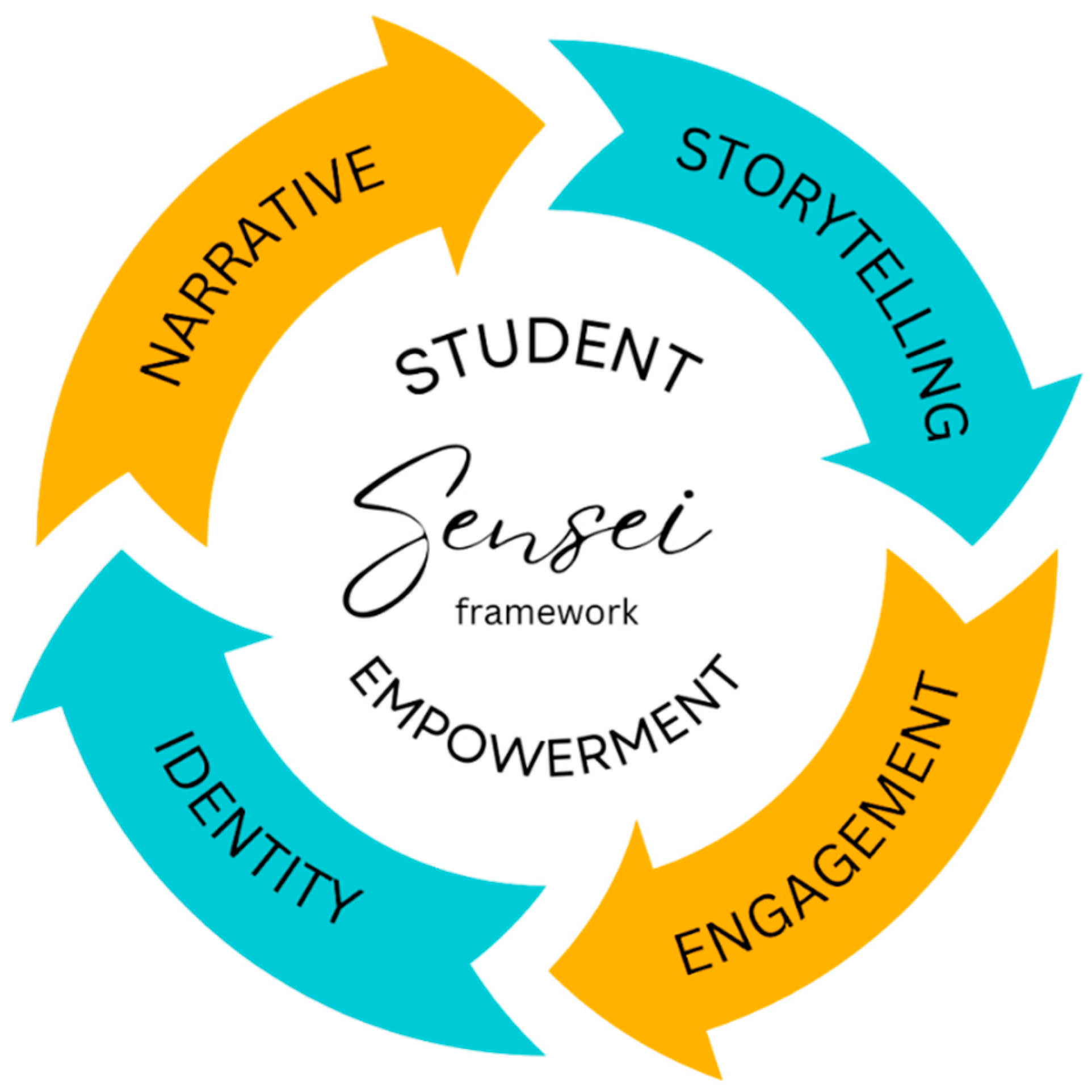
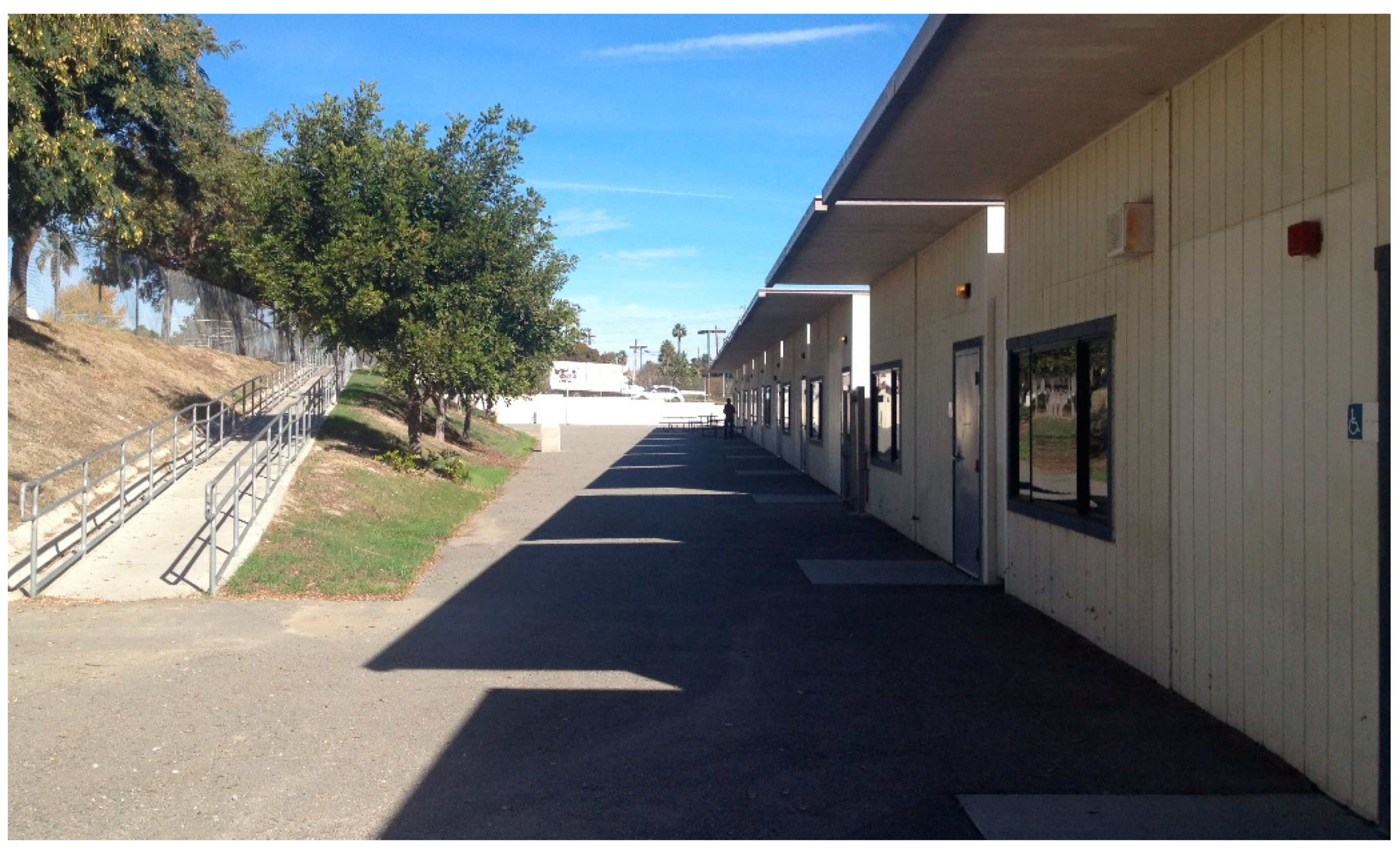
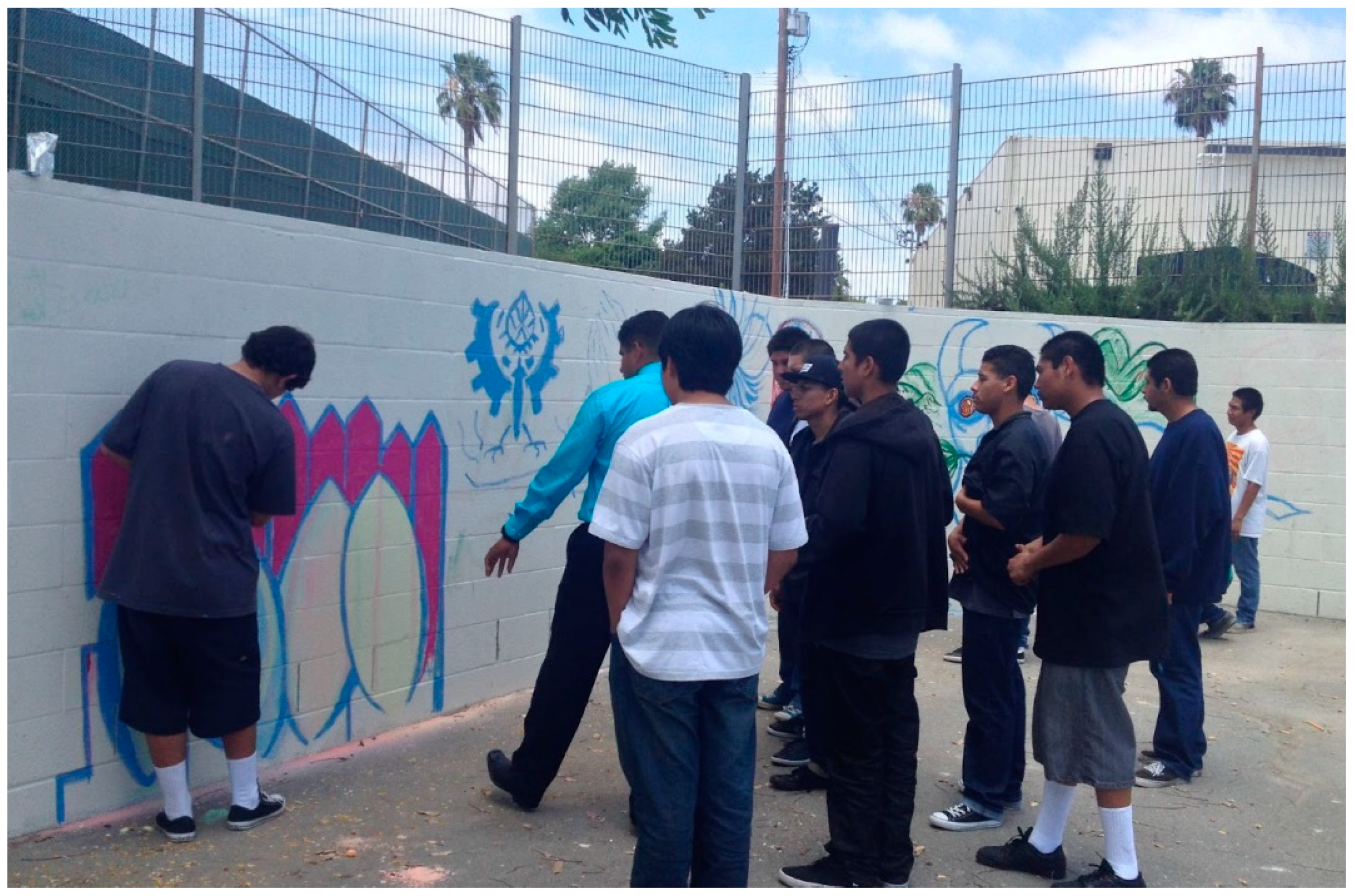

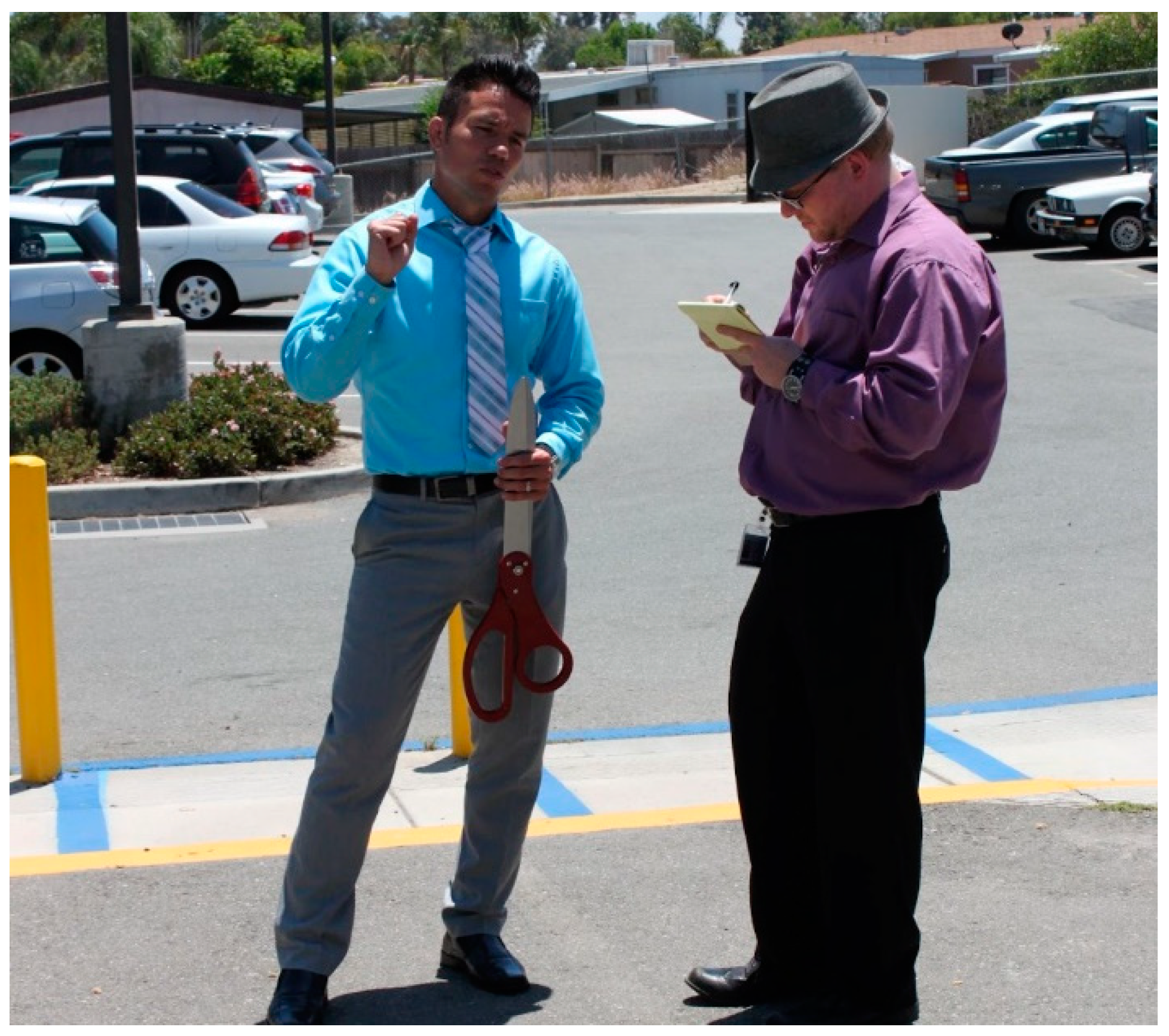
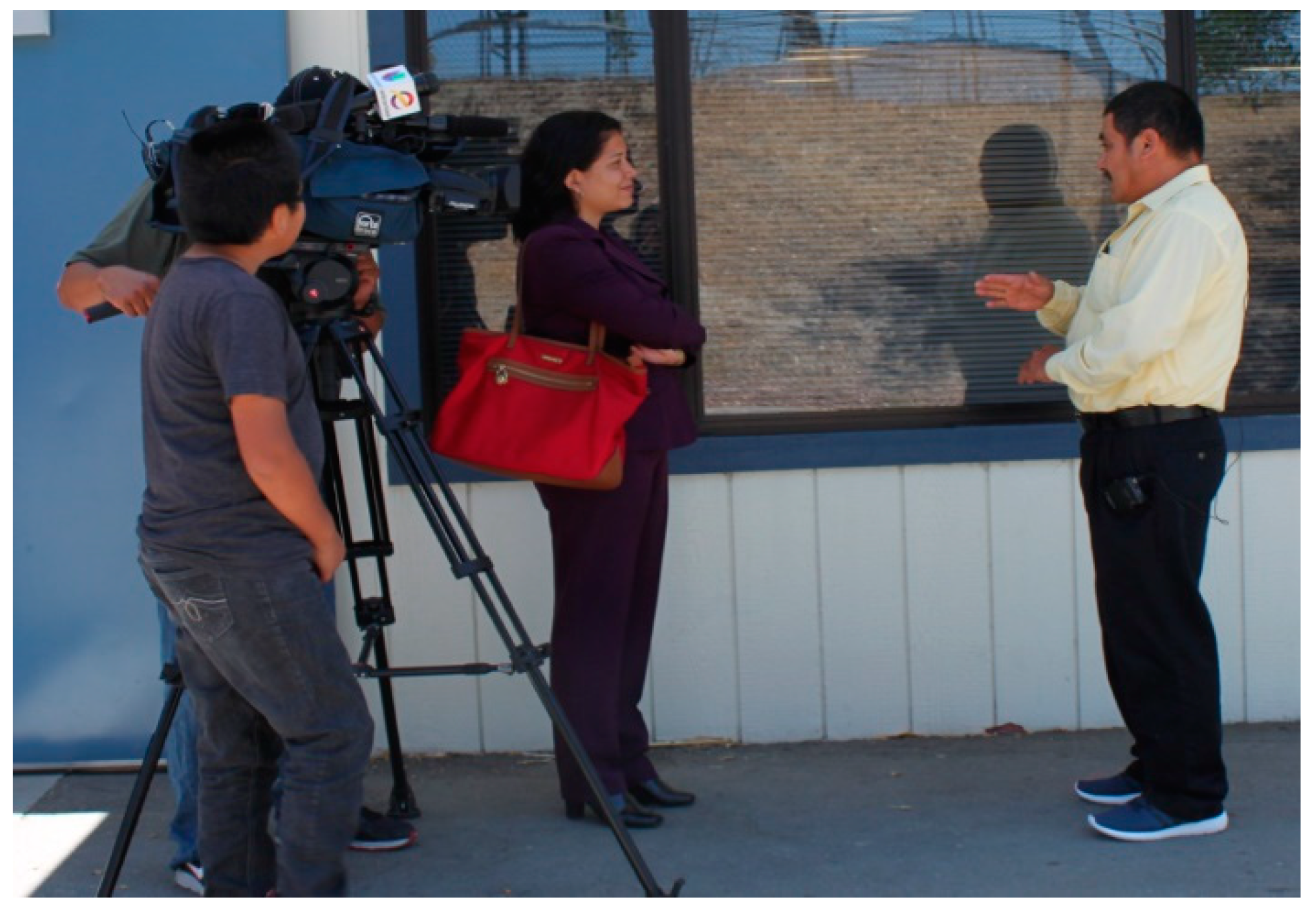
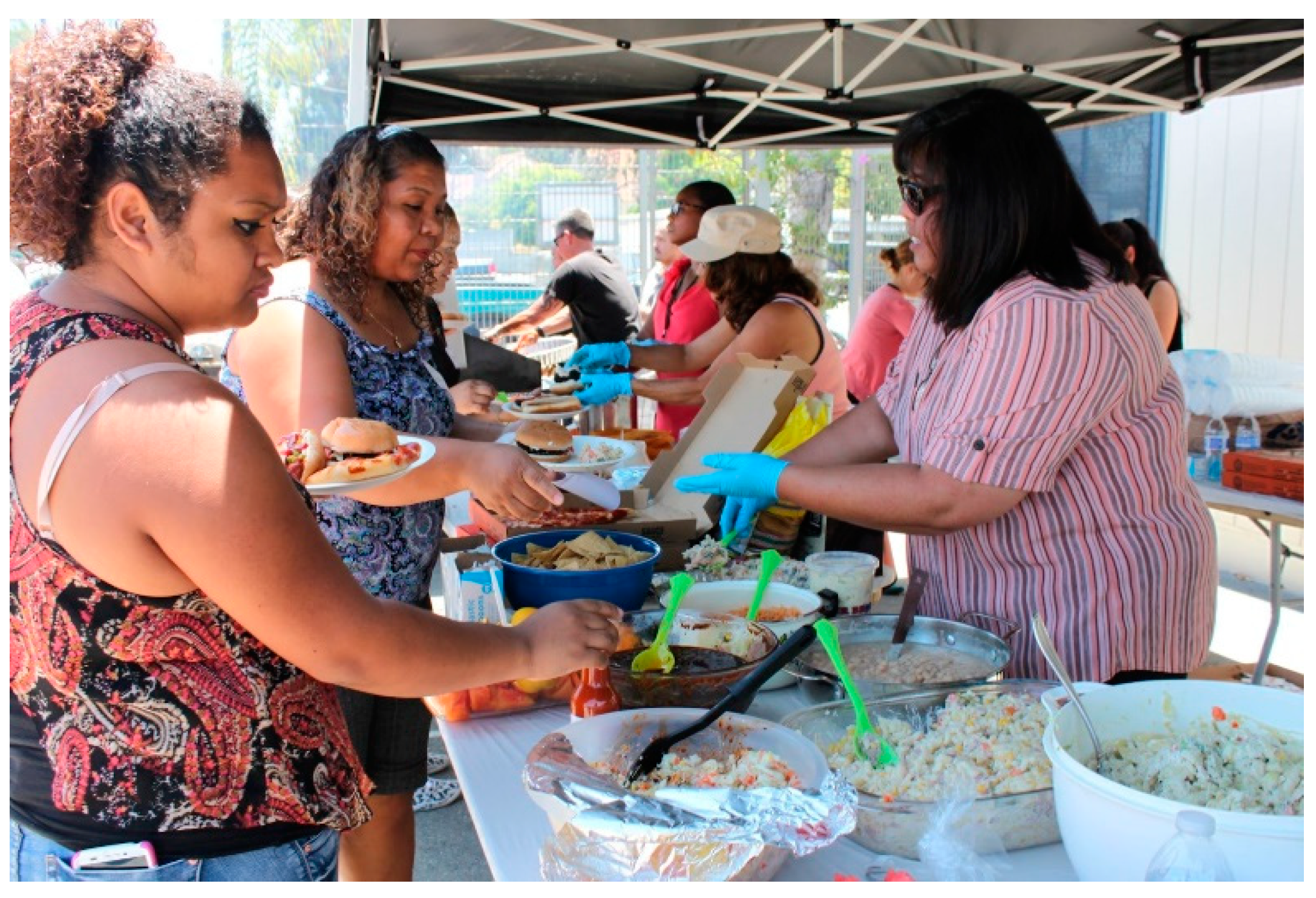
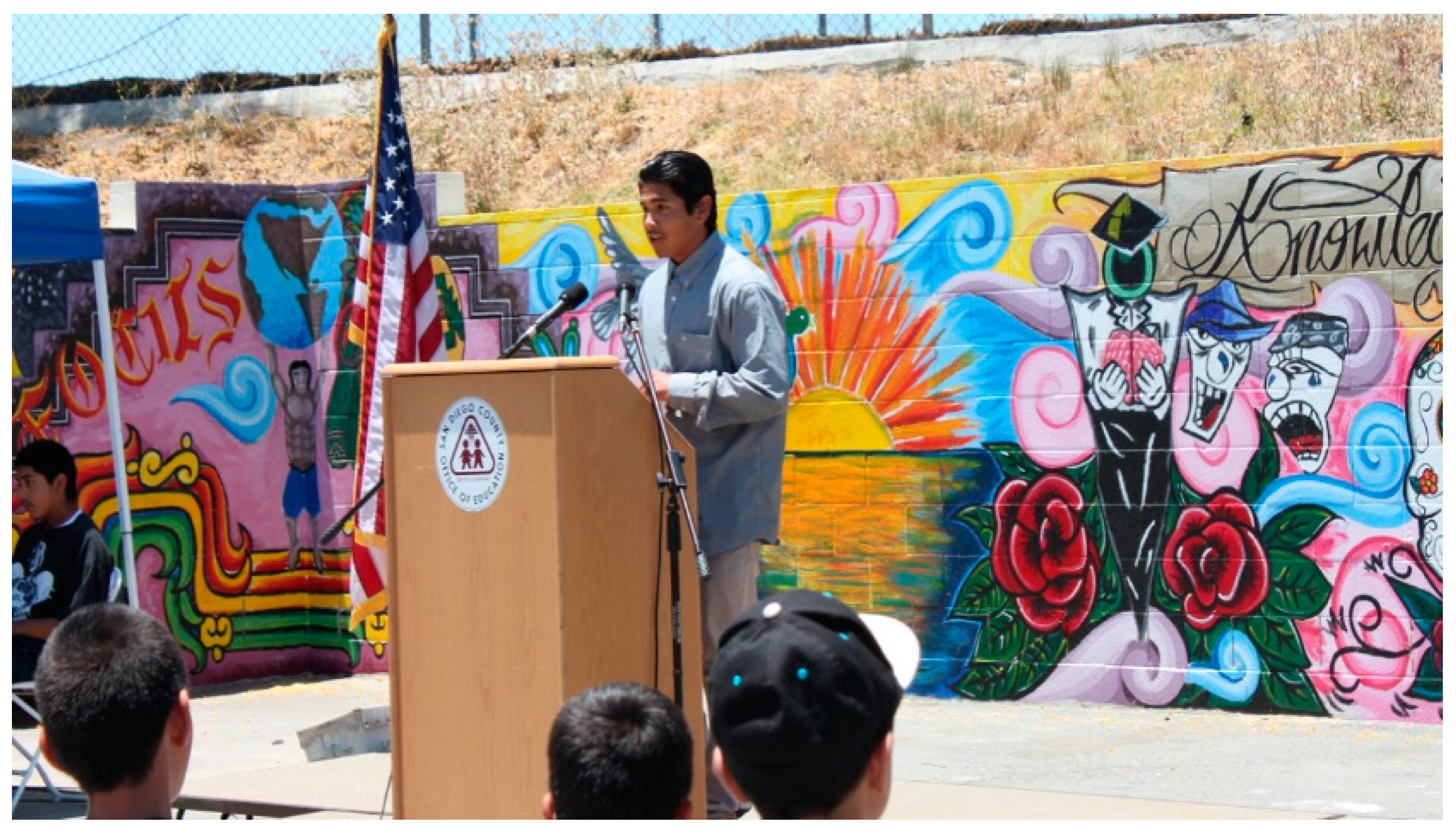

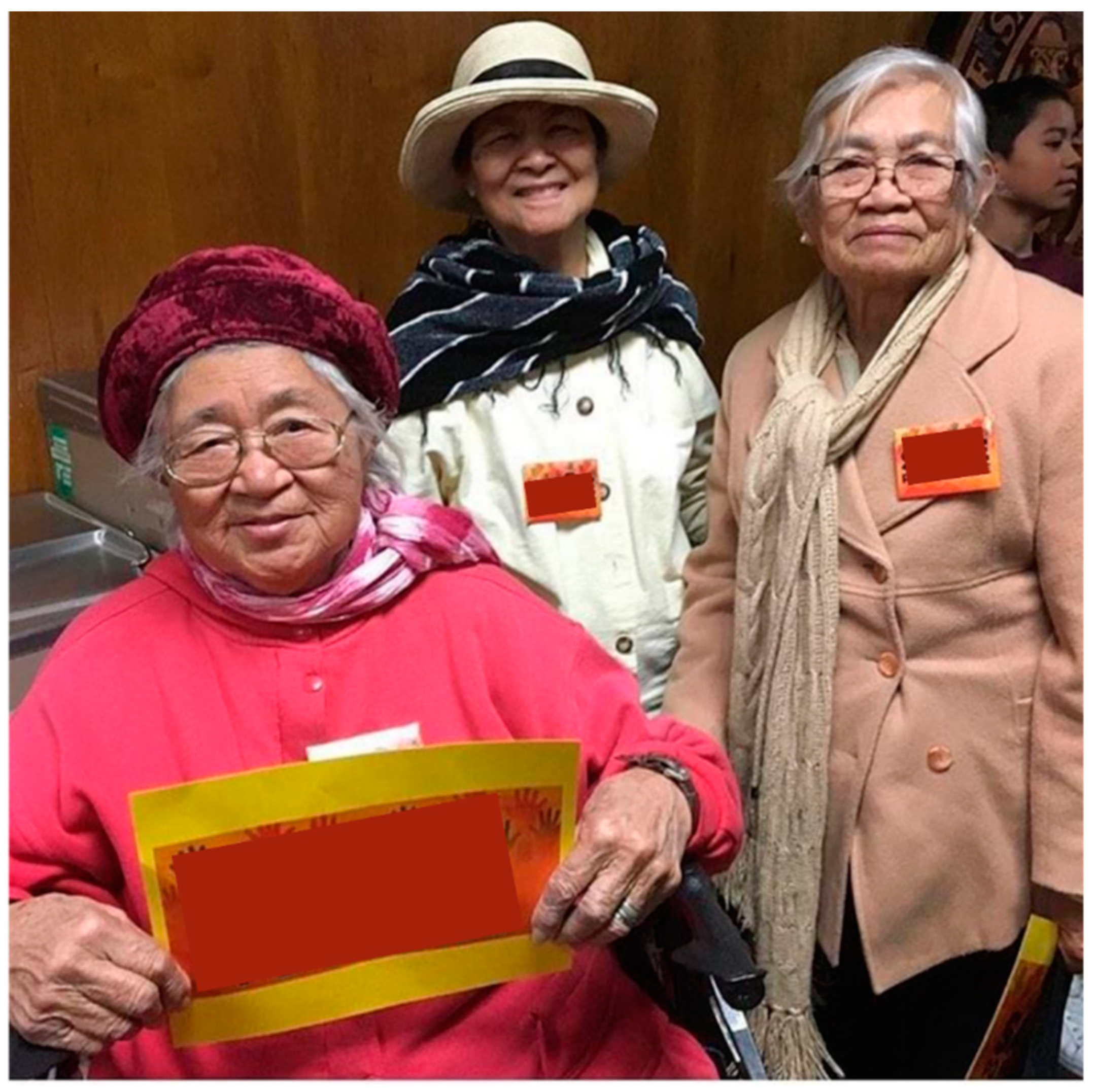
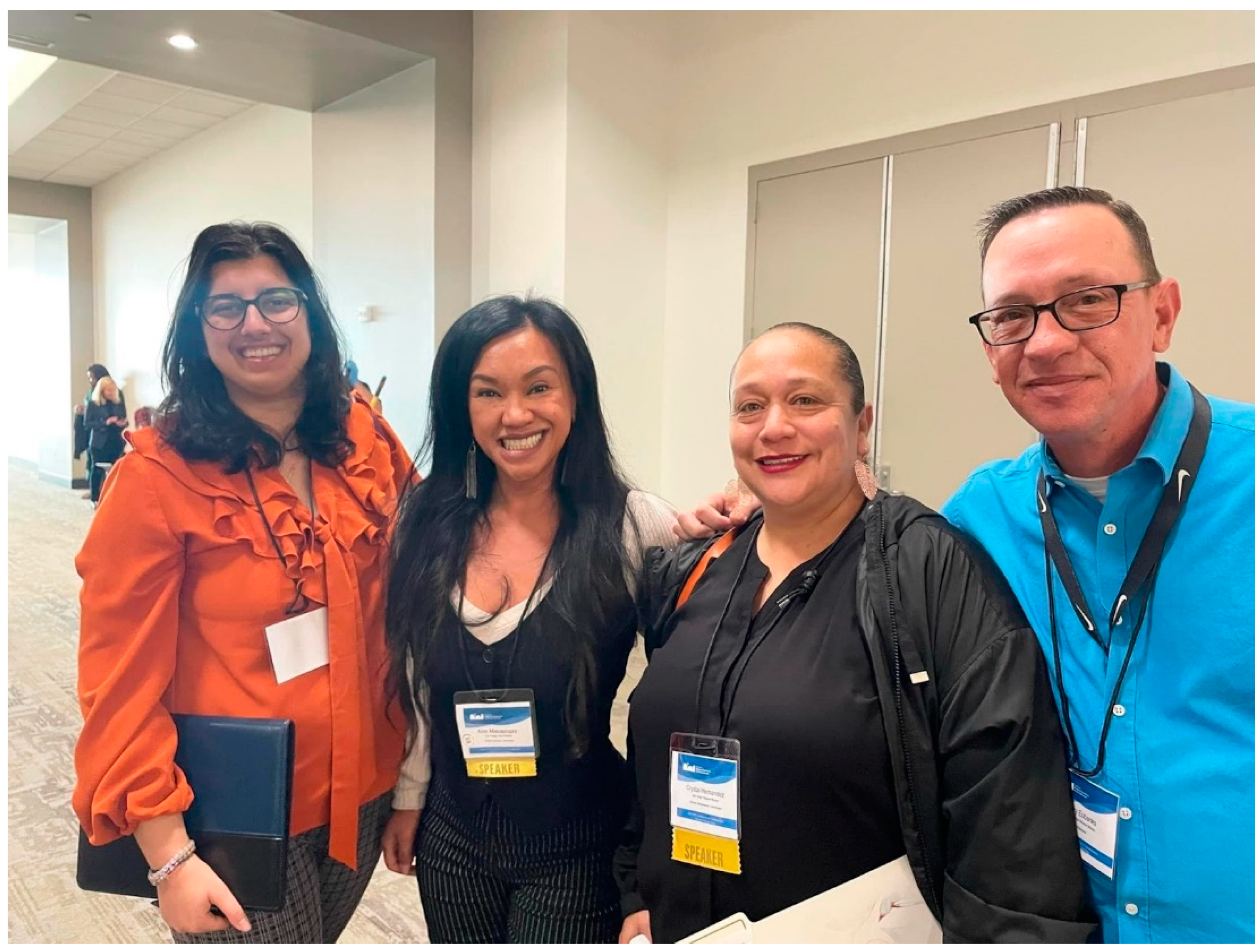
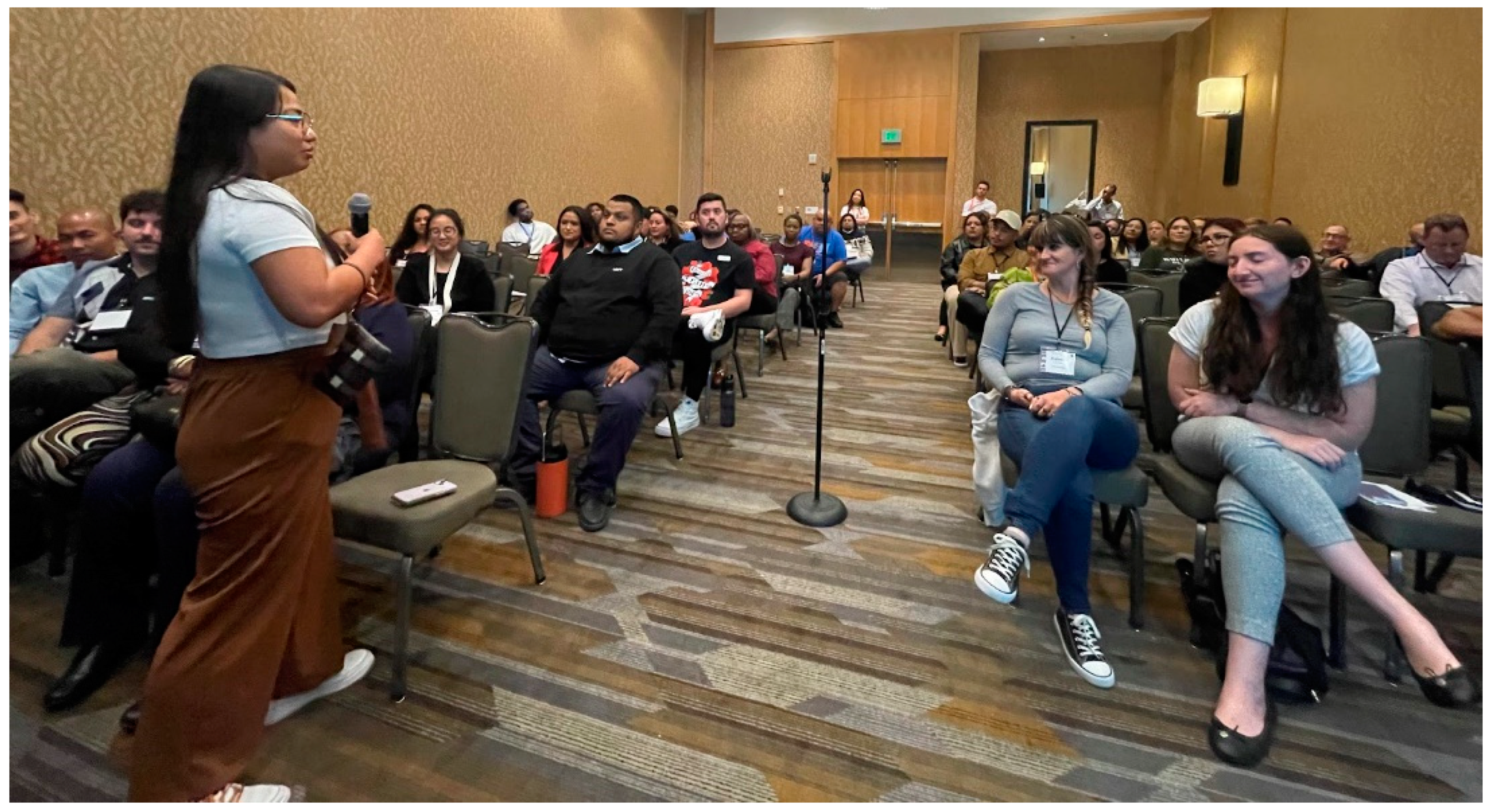
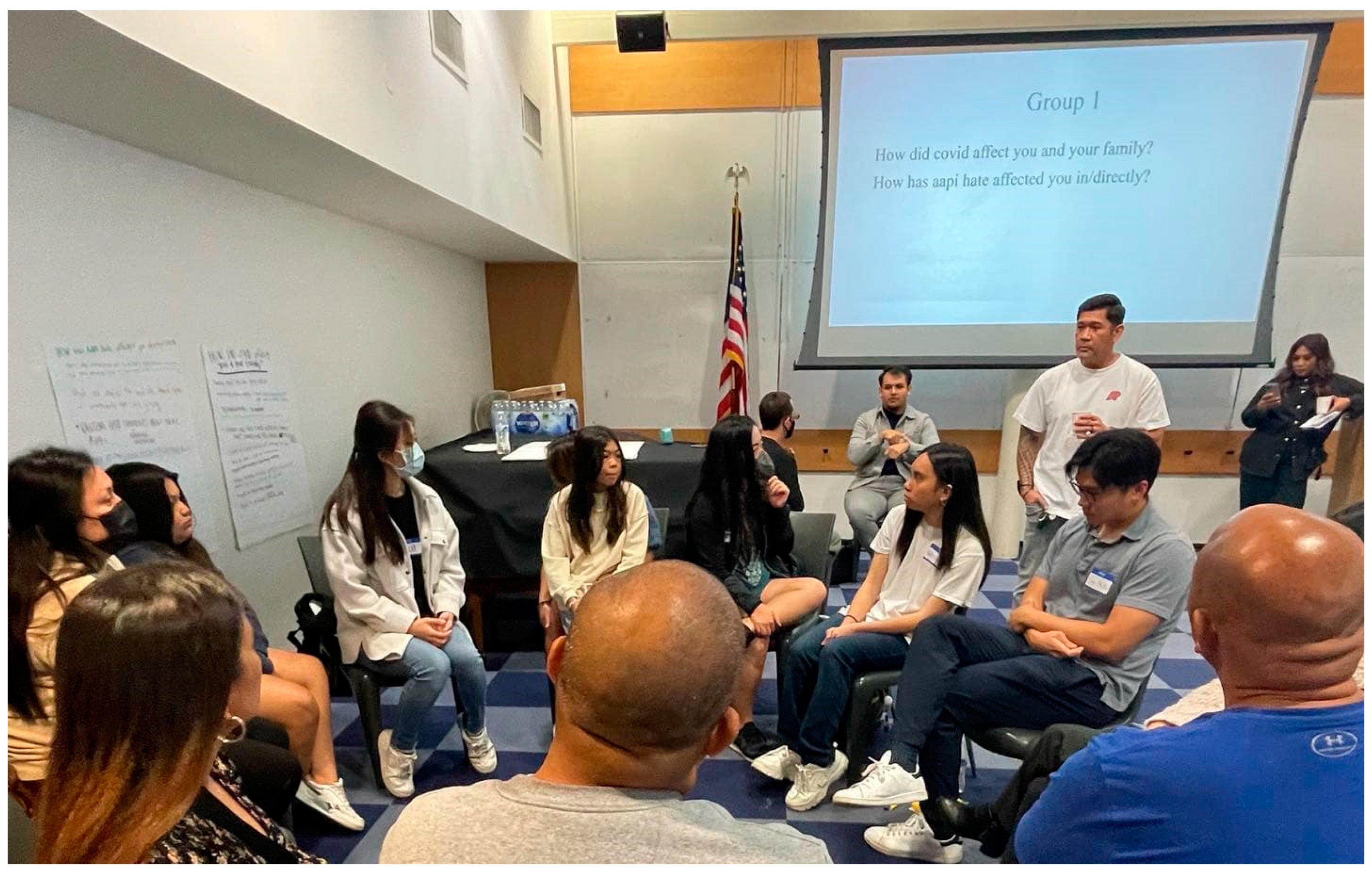
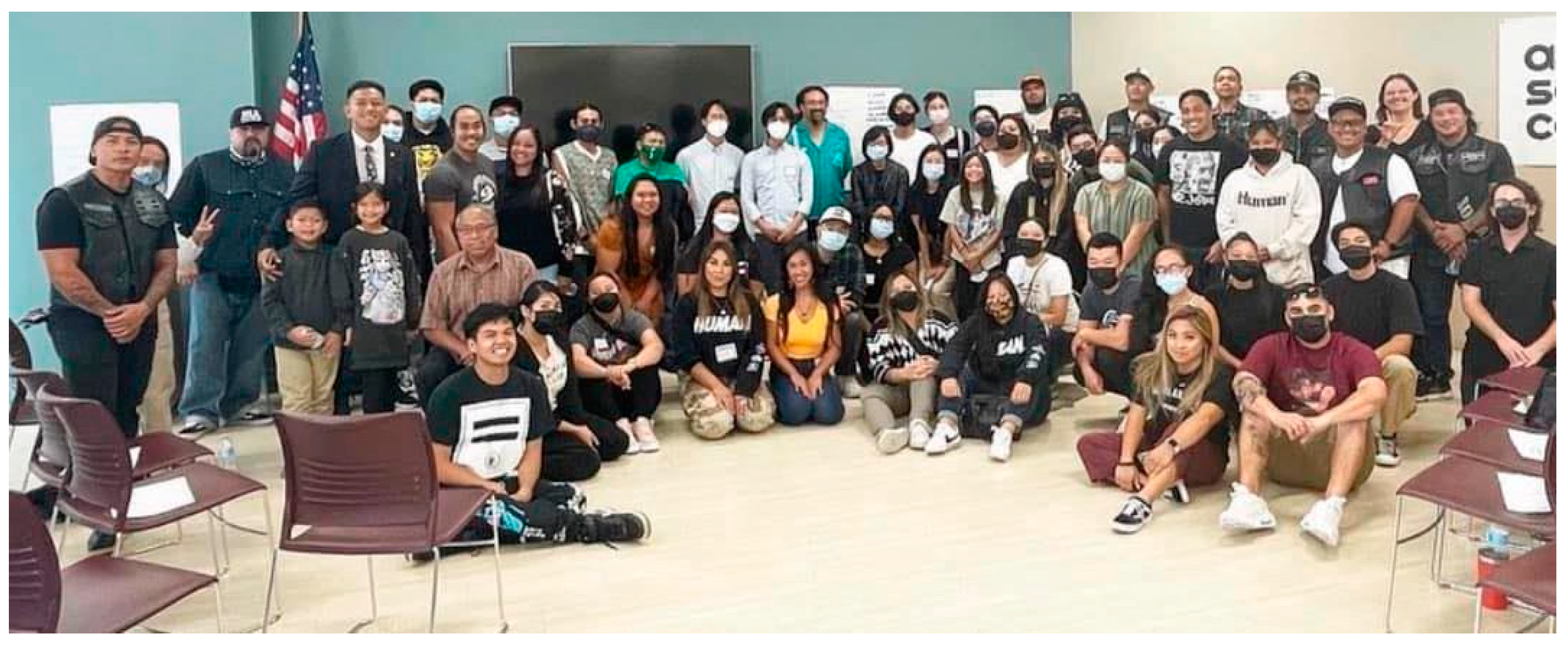
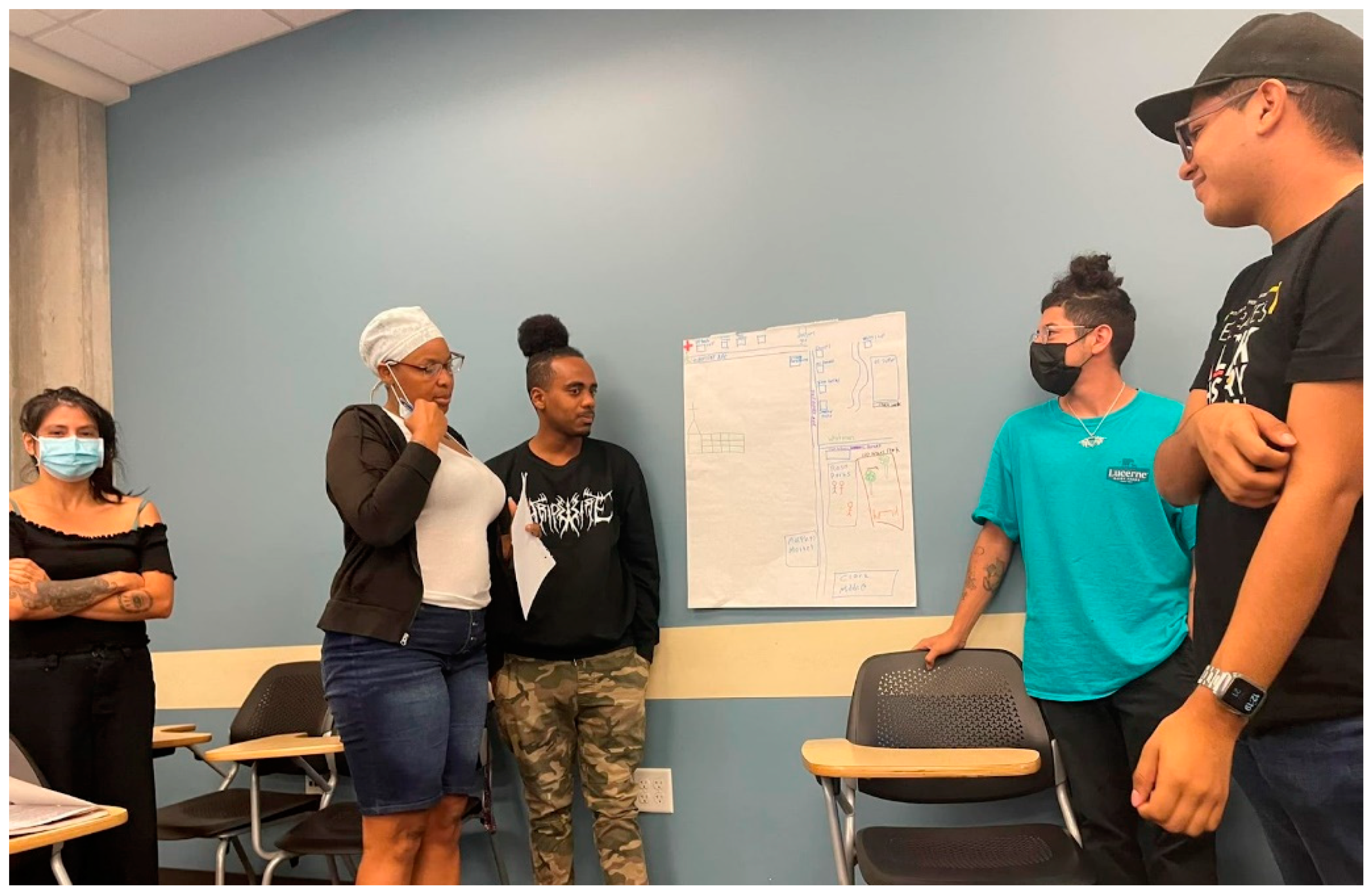
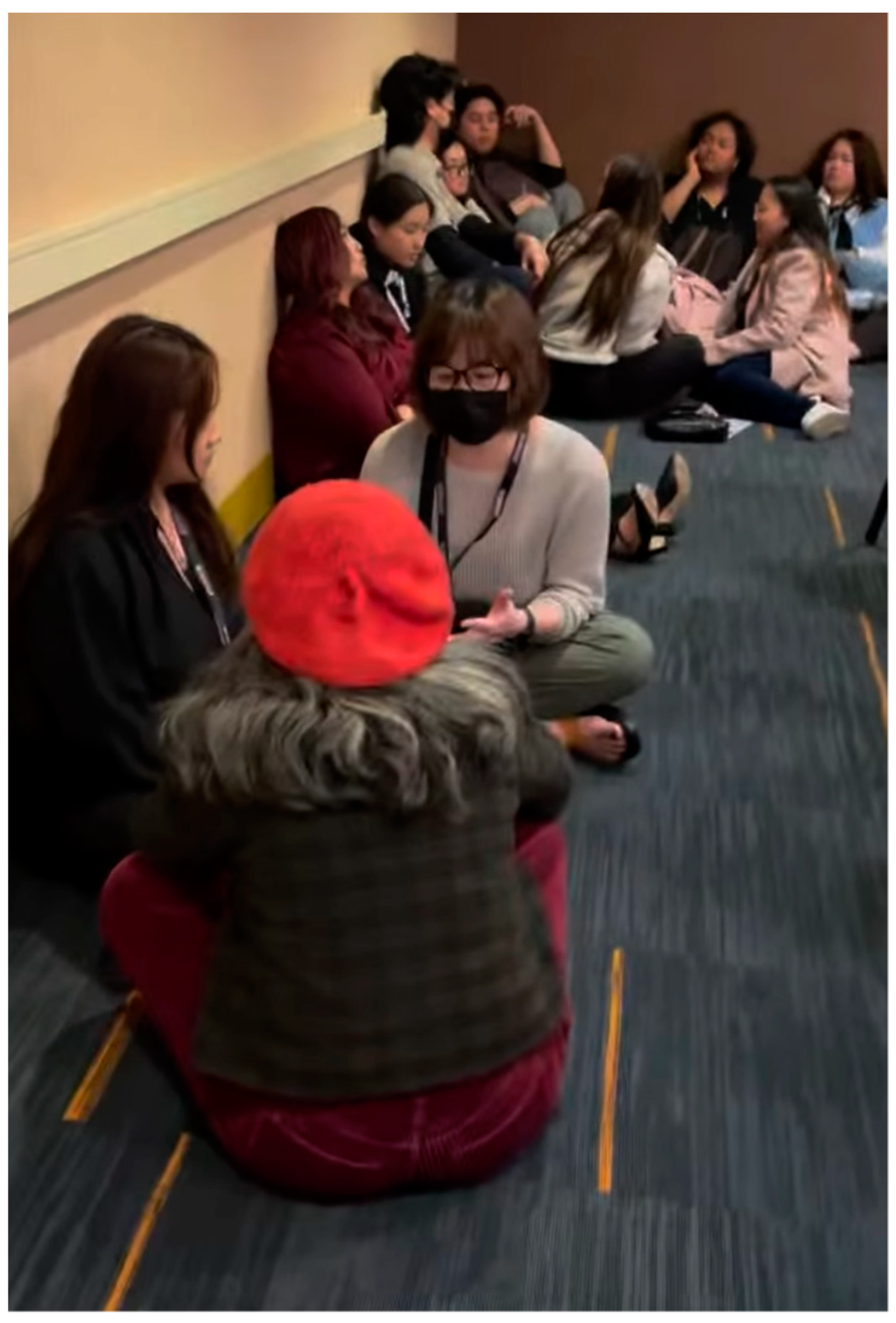
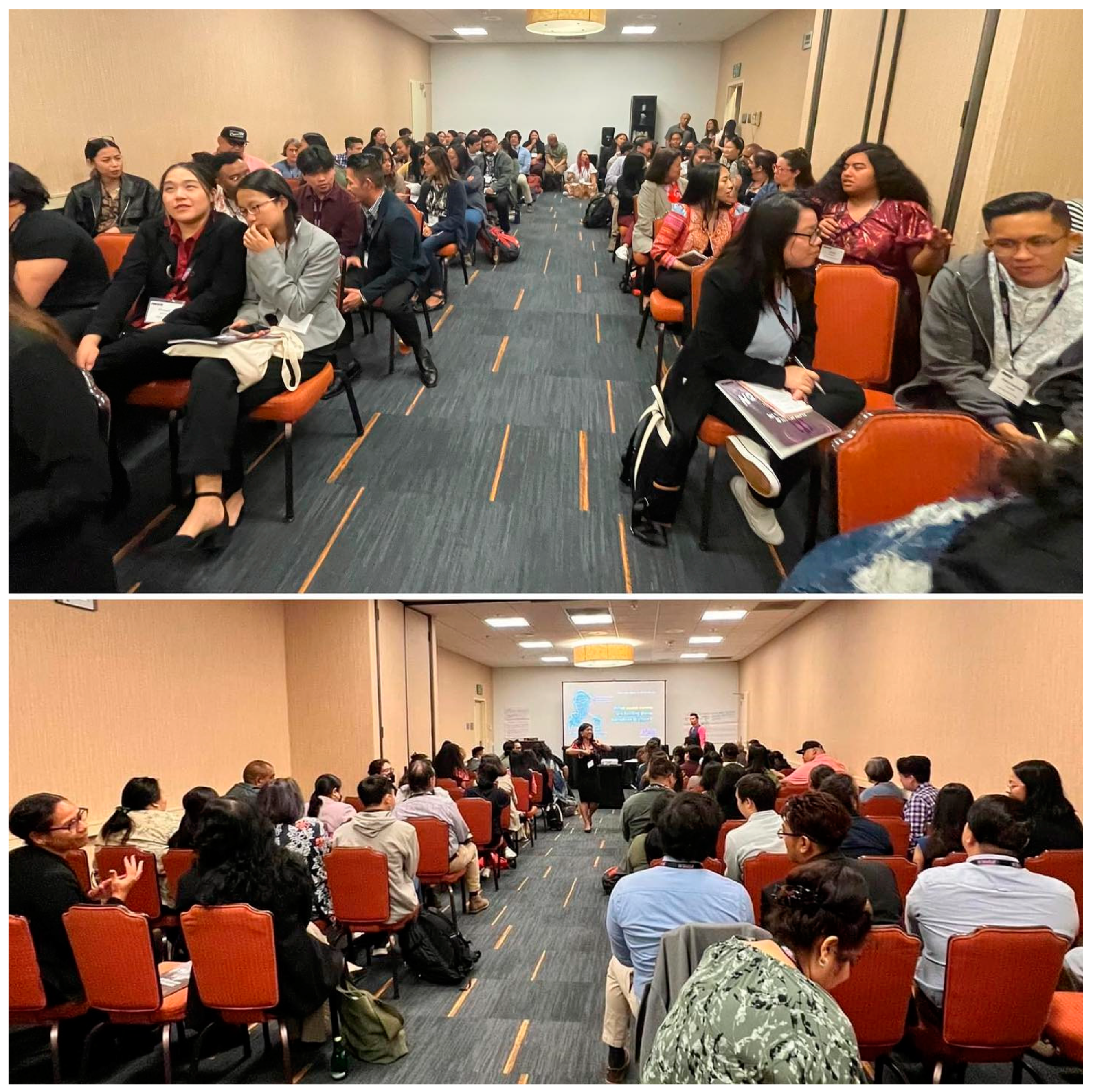
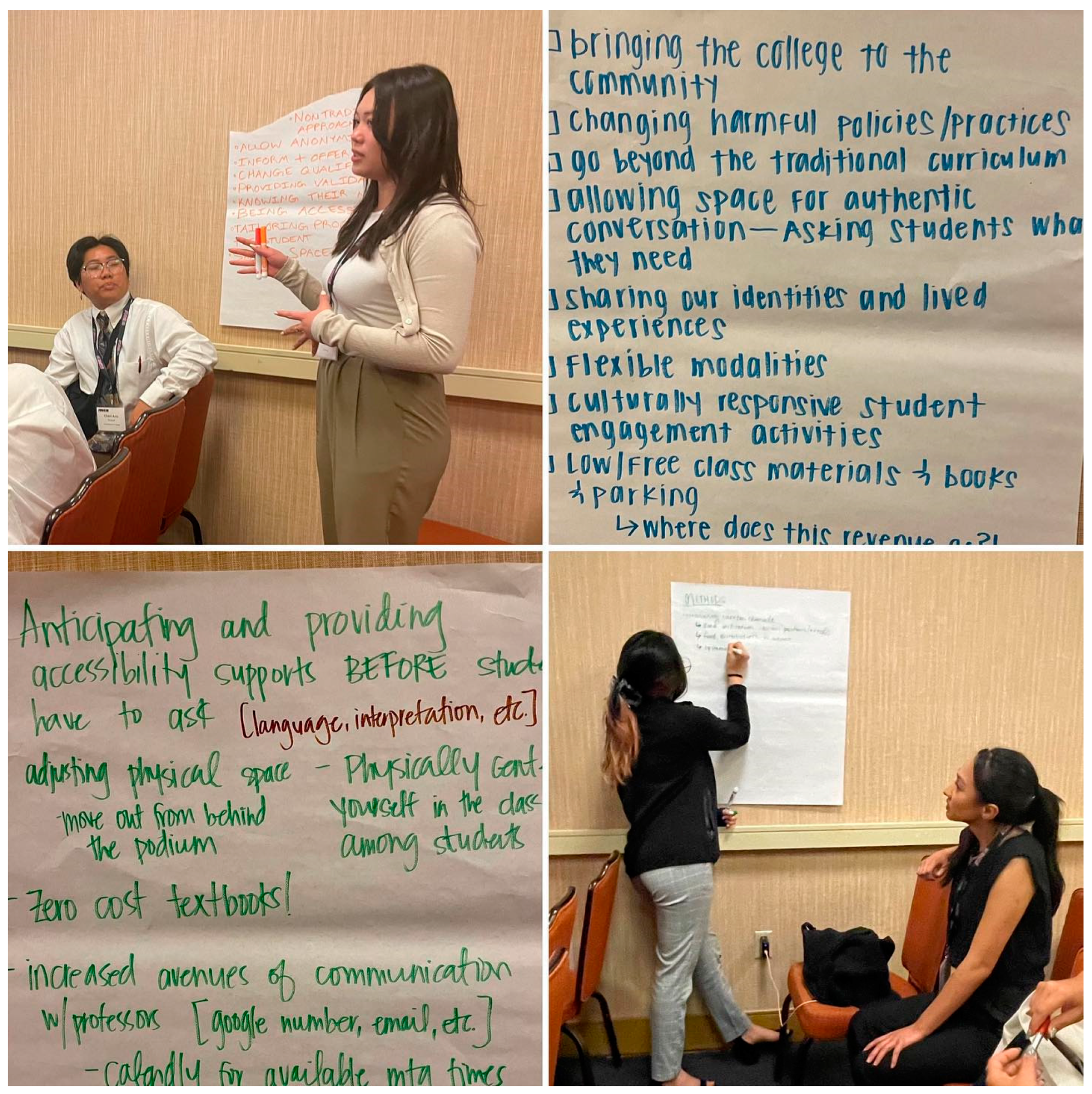
Disclaimer/Publisher’s Note: The statements, opinions and data contained in all publications are solely those of the individual author(s) and contributor(s) and not of MDPI and/or the editor(s). MDPI and/or the editor(s) disclaim responsibility for any injury to people or property resulting from any ideas, methods, instructions or products referred to in the content. |
© 2024 by the authors. Licensee MDPI, Basel, Switzerland. This article is an open access article distributed under the terms and conditions of the Creative Commons Attribution (CC BY) license (https://creativecommons.org/licenses/by/4.0/).
Share and Cite
Macapugay, K.; Nakamura, B. The Student Empowerment through Narrative, Storytelling, Engagement, and Identity Framework for Student and Community Empowerment: A Culturally Affirming Pedagogy. Genealogy 2024, 8, 94. https://doi.org/10.3390/genealogy8030094
Macapugay K, Nakamura B. The Student Empowerment through Narrative, Storytelling, Engagement, and Identity Framework for Student and Community Empowerment: A Culturally Affirming Pedagogy. Genealogy. 2024; 8(3):94. https://doi.org/10.3390/genealogy8030094
Chicago/Turabian StyleMacapugay, Kirin, and Benjamin Nakamura. 2024. "The Student Empowerment through Narrative, Storytelling, Engagement, and Identity Framework for Student and Community Empowerment: A Culturally Affirming Pedagogy" Genealogy 8, no. 3: 94. https://doi.org/10.3390/genealogy8030094
APA StyleMacapugay, K., & Nakamura, B. (2024). The Student Empowerment through Narrative, Storytelling, Engagement, and Identity Framework for Student and Community Empowerment: A Culturally Affirming Pedagogy. Genealogy, 8(3), 94. https://doi.org/10.3390/genealogy8030094




